When Rebecca Maeule tells people she competes at Scottish Highland Games, they usually assume she’s a dancer.
The 43-year-old takes great satisfaction in informing that them no, she won’t be performing any flings, reels or sashaying with swords, and that in fact, she’ll be tossing 15ft cabers.
“They often say: ‘Are you doing the dancing?'” laughs Rebecca. “I tell them that no, I’m throwing the caber! I mean come on! Do I look like a dancer?!
“I wear a kilt, but I won’t be dressing up in lacy blouses with ruffled sleeves!”
Rebecca, a fruit farm manager who lives near Errol in Perthshire, got her first taste of Scottish Highland Games in 2019.
And she’s been hooked on throwing heavy things – cabers, shot puts, hammers, and weighted balls and chains – ever since.
Unique celebration of Scottish culture
She’s among a growing community of women across the country who are passionate about the unique celebration of Scottish culture and keen to break down stereotypes about “hefty lasses” and any perceived barriers to women hoping to take part.
And of course, because the caber toss is regarded as the most thrilling and iconic event of Scottish Highland Games, they love it the best.
Essentially, competitors throw a large tapered wooden pole (usually made from larch) weighing around 80 pounds, and between about 14 and 20 feet in length.
How on earth is this possible? And if the ambition is to get more women to get involved in heavy events, is there a chance someone like me, who is reasonably fit, but not very strong, could give it a bash?
“Absolutely, yes!” exclaims Rebecca. “We have women of all shapes and sizes, some quite slight, and do a great job. It’s about technique rather than being bulky and muscly, so sure, you could definitely give it a shot.”
Alas, while I did intend visiting Rebecca and two of her “throwing” pals for some Highland Games training in Pitlochry – where they have access to a caber – I was unable to make it along.
And no, my reason for not attending was NOT because I was too feart!
Caber tossing is about technique
So, how does it work? It’s a common misconception that the aim is to throw the caber as far as possible – the aim is not distance but precision and technique.
It’s a test of accuracy, with competitors lifting the caber upright, cradling it in their hands and running forward to toss it so that it “flips” in the air and lands on the opposite end.
Points are awarded for the straightest flips, and the winner is the person with the toss closest to a coveted “12 o’clock” landing.
“It’s such great fun,” says Rebecca, who moved from Germany to Scotland in 2002.
“And the caber really IS the Highland Games.
“But while most of us women have our own training equipment at home – shot puts and so on – many of us don’t have cabers. Sadly nobody’s invented a fold-up caber yet!
“So we don’t get much opportunity to train, apart from when we come along to places like Pitlochry.”
Collection of cabers
However, Dumbarton-based powerlifting champion and Highland Games legend Elizabeth Elliott does indeed have a collection of cabers that Rebecca and her friends sometimes get their hands on.
“She’s got the biggest caber collection in Scotland,” says Rebecca. “She’s squirreling them away!
“Other than that, you have to source an old telegraph pole – you can find them on Gumtree – but it’s quite a lot of work to transform it into a caber.
“You need to chop it to the right size and taper the end, rounding it off like a wee pencil.
“Some people also use a drain pipe filled with foam to weight it.”
Rebecca enjoys training with other women, so they can give each other feedback, talk about what they’ve done wrong and how they can improve technique.
Rebecca got the caber bug
It’s five years since she got the caber bug, having joined a training weekend for ladies ahead of Blairgowrie Highland Games.
“I took part on Friday and Saturday and was then asked to throw at the games on the Sunday!” she recalls. “I had less than 12 hours to find a kilt and all the shops were shut!
“But I absolutely loved it and was looking forward to the 2020 season. Then Covid hit.
“I kept an eye on the Royal Scottish Highland Games Association (RSHGA) news and participated in the Crieff training day in 2022 and threw at a few games that year.”
Following another training day in Braemar last year, Rebecca threw at nine games including Ceres, Inverness, Dornoch, John o’ Groats, Blairgowire, North Berwick and Pitlochry.
She has 16 games lined up for 2024 and there are 21 on this year’s ladies’ calendar.
Games take competitors across Scotland
That’s a lot of travel – but she adores it.
“When else would I get the opportunity to travel to Gordon Castle near Fochabers, or John o’ Groats?” Rebecca muses.
“The games take us all over Scotland. The camaraderie and sense of community, support and friendship is brilliant.
“I’m still a newbie learning the techniques for each event so it’s good to learn from others.
“I take part in the ladies’ heavyweight competitions which includes shot put, weight for distance (throwing a weighted ball and chain), throwing the hammer, weight for height (throwing a weight over a raised bar), and of course, my favourite, throwing the caber.
“I absolutely encourage women of all shapes and sizes to have a go at throwing. It makes you feel so powerful and there’s a huge buzz.”
More Highland Games for women
Rebecca and her fellow female competitors are on a mission to get Highland Games organisers to include a ladies section, which means they can use cabers and other equipment better suited to them.
So for example, while male caber tossers might throw a tree weighing 90 to 150 pounds, the women might lob one closer to 80 pounds – which is half as heavy.
“We’ve always had the option of throwing with men but with equipment that’s double the weight,” explains Rebecca.
“So we’re contacting games asking if they want to host ladies. In 2022 there was just a handful of ladies’ games on the calendar, and now after our group of ladies’ efforts there are about 22.
“If games do host ladies, they need extra equipment, so we’re really grateful if they make the effort.”
‘I thought she was so badass!’
Fellow female Highland Games competitor Ruadh McIntosh, 35, was inspired to take up caber tossing after she watched Magda Ciarkowska throwing men’s equipment at Pitlochry Highland Games in 2022.
“I just thought she was so badass!” exclaims Ruadh, a geo-environmental consultant from Lasswade in Midlothian, originally from Blair Atholl.
“I’ve been helping my uncle, Raymond McIntosh, to run the heavy events at Pitlochry Highland Games for a good few years.
“It was originally the promise of £20 and a nip of whisky that got me on board!
“Two years ago, when there were no dedicated ladies events, Magda turned up, entered the men’s open and threw all their heavy equipment. It was amazing!
“I spoke to my uncle to see if we could run a ladies event. We ladies have been rounding up more competitors ever since.
“And last year, for the first time, Pitlochry ran its own ladies event.”
Just go for it
While Ruadh says tossing the caber is down to a combination of strength, skill and confidence, she reckons a massive part of it comes down to “not being afraid to make an arse of yourself!”
“You really just have to go for it. A caber’s not the sort of thing you find on the street. So we don’t get a lot of practice unless we get to Pitlochry or Dumbarton.”
Meanwhile, Laura Barber, 31, is looking forward to her second season of competing.
Originally from Winnipeg in Canada, Glasgow-based Laura has been involved in Highland Games since she joined a training day in Braemar last year.
Laura, who works in the whisky industry for John Dewar and Sons – “I went fully Scottish!” – says while there’s a “base amount” of strength that goes into caber tossing, it’s largely about technique.
“On a windy day or on slippery ground, it can pull you,” she says. “But you don’t need to be Scotland’s strongest woman to caber throw.
“Once you have the technique of where to place your feet and how to get down low into the ground to pick it up, then technique really takes over.
“You can make a lot of weight move just by using technique and physics. Balance, timing and coordination are really important.
“Extra strength won’t hurt but we do have some slighter ladies who throw and manage fine.
“It’s a really encouraging community. You can work on form and technique. You get out what you put in.”
Sense of community
While travelling to Highland Games across the country clearly brings great joy, it’s all self-funded.
Some events offer fuel money, but competitors must shell out on accommodation if overnight stays are required.
“We can car pool with others and split accommodation costs,” says Rebecca.
“But we just love the social aspect – you meet like-minded people from all over the world.
“There are maybe 10 to 12 women on the circuit in Scotland – those we’d call regulars – and maybe 22 in the community.
“We also see Americans competing in the games, making it part of their summer holidays, and sometimes a few Paralympians and powerlifters.
“There are loads of events coming up including Inverness, Ceres, Glengarry, Forres, Alva, Tomintoul, Taynuilt, Perth, Birnam and Pitlochry.”
Prize money at stake
While competitors are often asked to pay a registration fee, some events allow them free entry. They’re entertaining crowds, after all!
“We’re just glad to be there,” says Ruadh. “But there’s sometimes some decent prize money at stake.
“At some events the overall winner can take £300, or you might get a trophy or bottle of whisky.”
With such hectic lifestyles, I wonder if the women have any partners they need to placate? Turns out they all have significant others.
“Our partners are all pretty chill,” says Ruadh.
Rebecca chuckles. “My other half asks if I’m away at the weekend and I say either yes or no.
“He comes to some games but not all because it’s a long day if you’re sitting on the sidelines.”
Get more women into Highland Games
Forfar-based Charlie Murray, chair of the Royal Scottish Highland Games Association, is keen for more women to take part in throwing events as a “step forward to answering equality”.
“The heavy events have been a tradition of male competitors but there was never a barrier preventing females from competing as all events are open,” he says.
“What has possibly been a barrier is that the weights used in the throwing disciplines at a traditional Highland Games are beyond any female competitor being able to throw, hence the introduction of weights suitable for female competition.
“The success of this will be down to the competitors, their ability to train hard and show improvement through results on a week to week basis.
“I have attended and judged female competition at Gourock, Gordon Castle and Blackford.
“My view is that they were a good addition to the programmes. I am sure if there is evidence of the work ethic they will continue to be part of the events seen at a traditional Highland Games up and down the country.”
Charlie says a concern for some events is how they can fit additional competitions into already busy programmes, and how they can obtain funds to support the introduction of new events.
He adds: “Highland Games are like any sport – if you do the work on the training ground and deliver in the event circuit, then games committees will welcome your participation.”
- There are various theories about the origins of tossing the caber. One is that lumberjacks who had to cross small rivers would throw shaved logs as makeshift bridges, an activity that soon became a competition. Another theory holds that wooden poles were crafted by soldiers and used to cross moats during attacks on castles.
- First recorded in the mid-1500s, the word ‘caber’ comes from the Gaelic for pole.
- Check the RSHGA calendar for upcoming games.
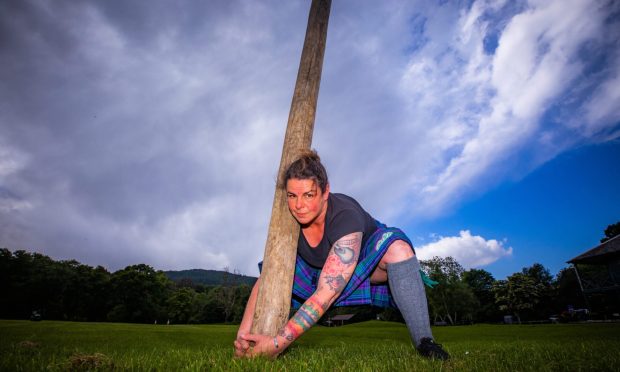
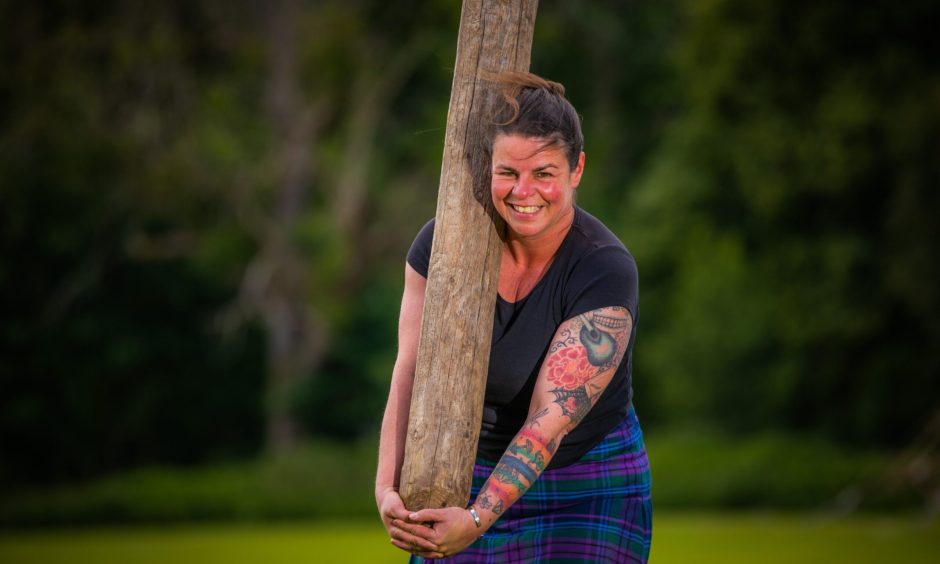
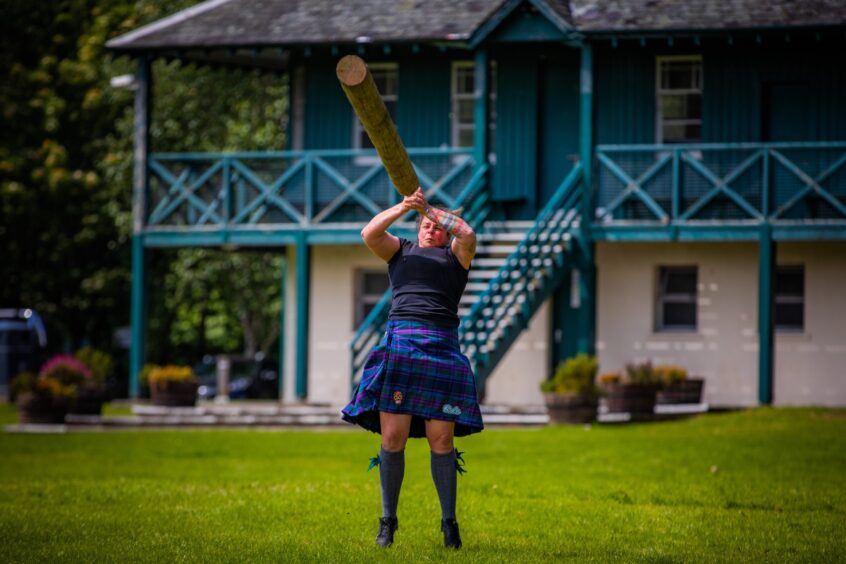
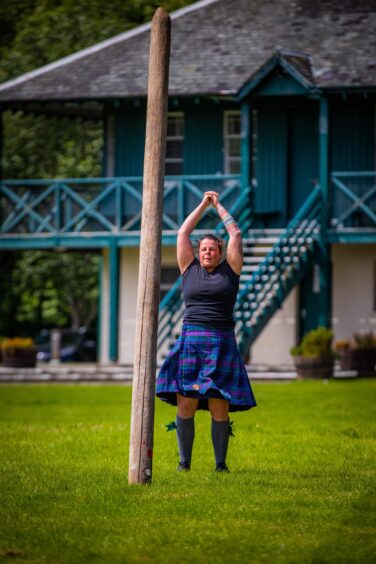
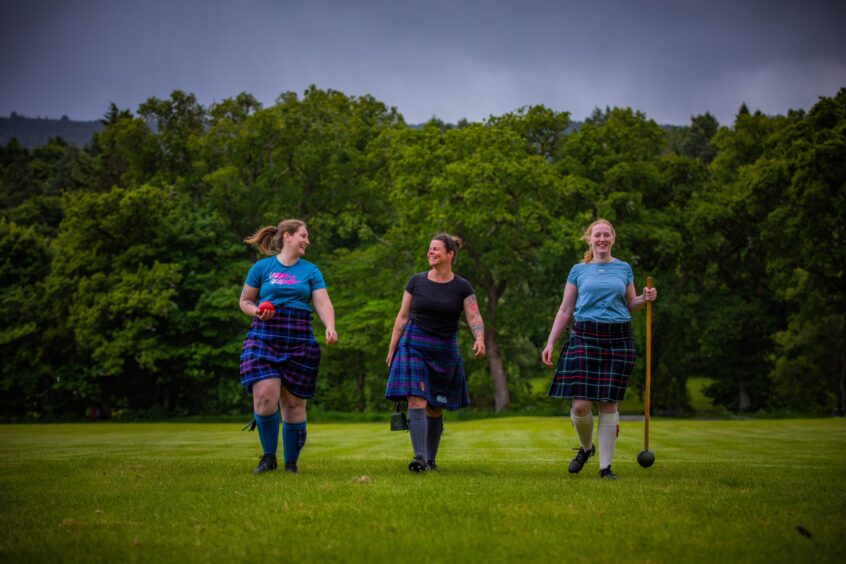
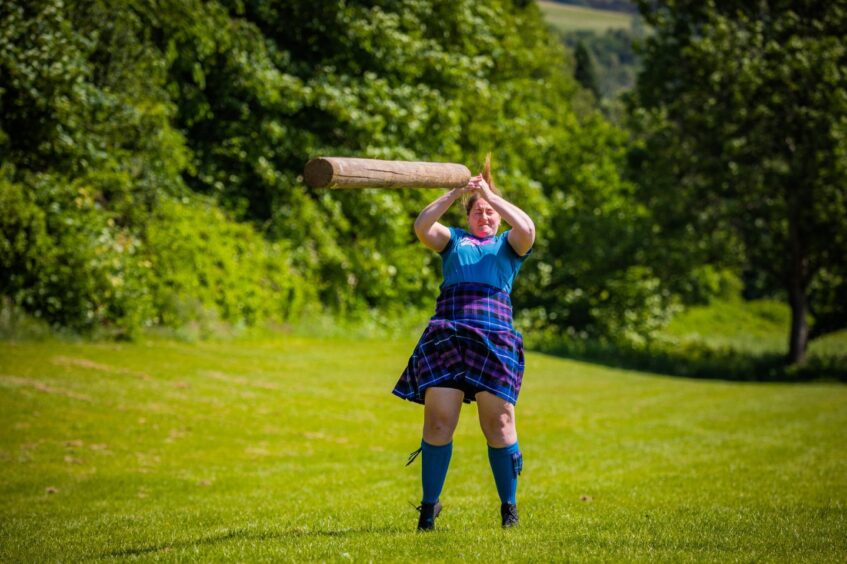
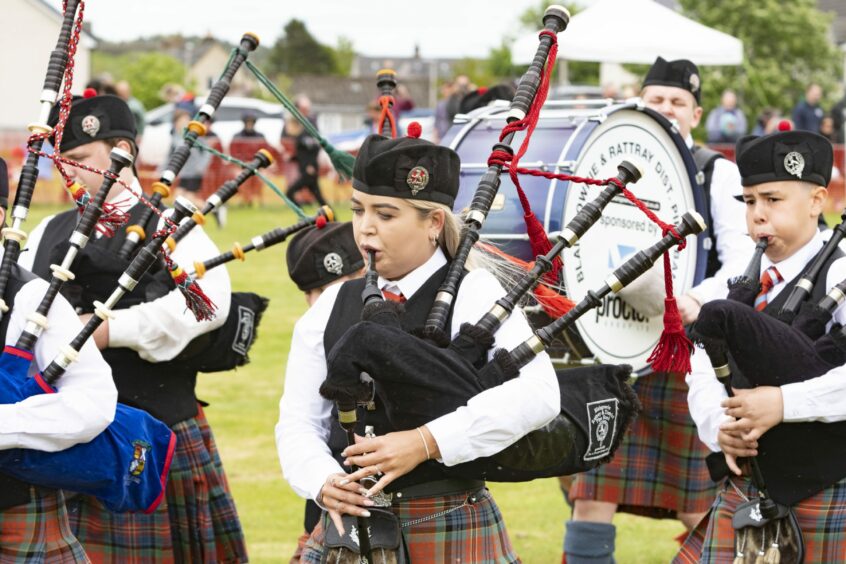
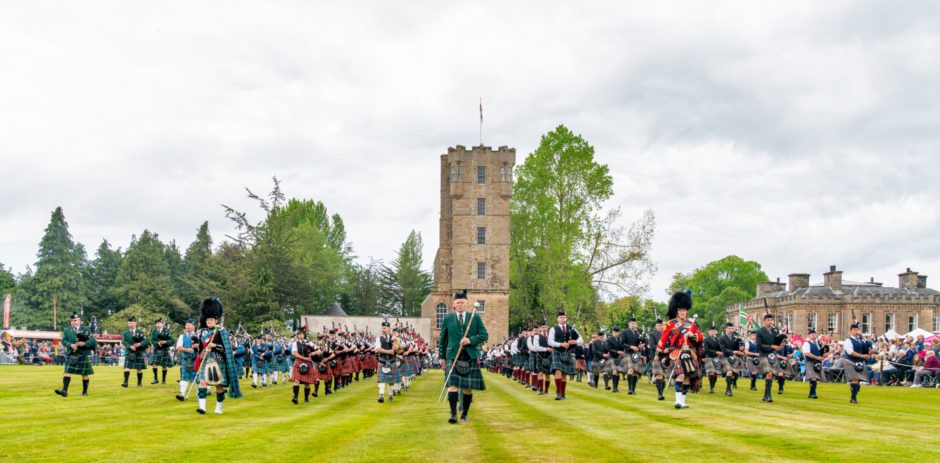

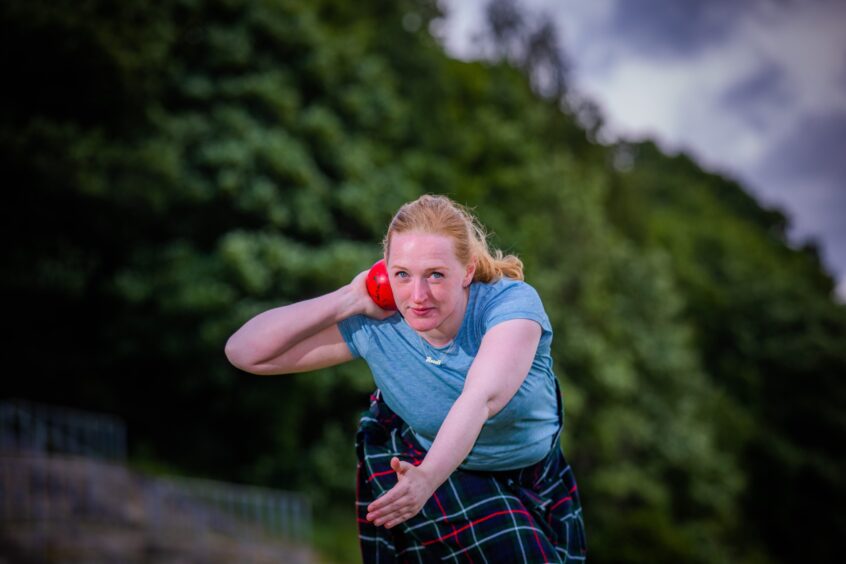
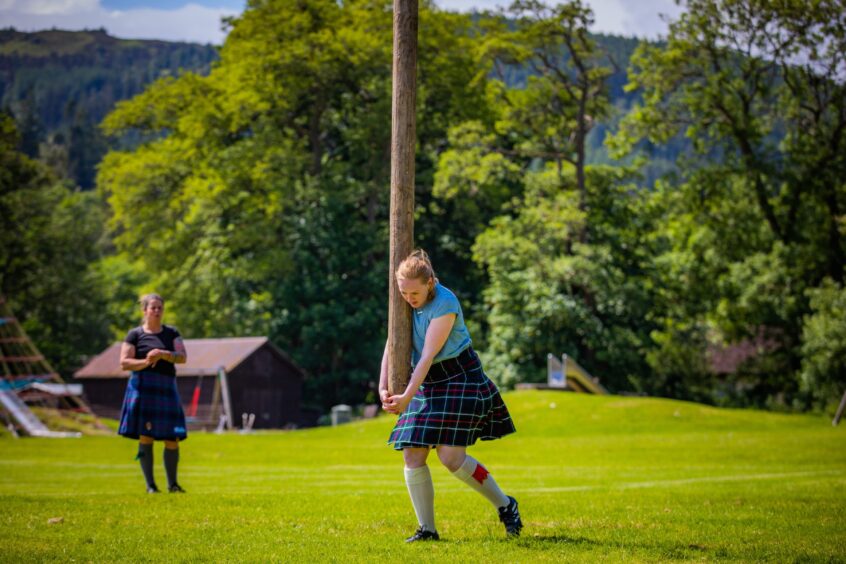
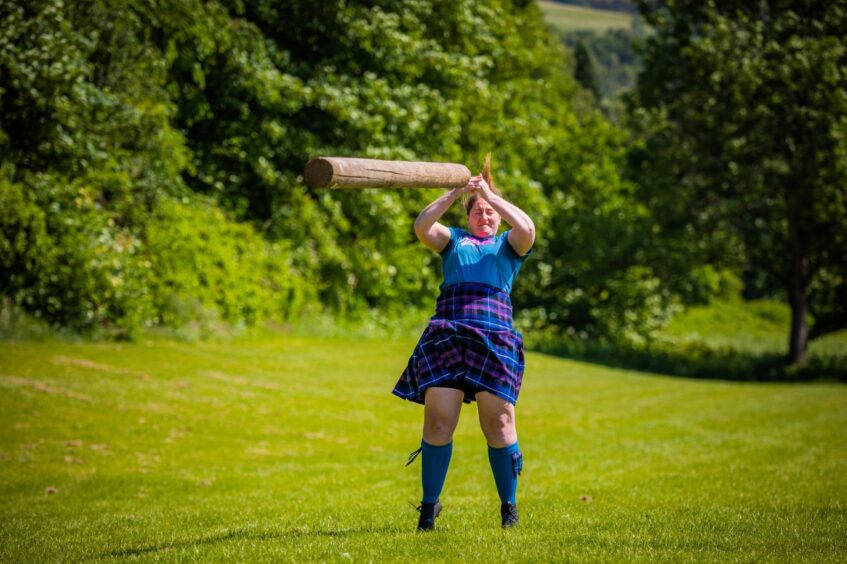
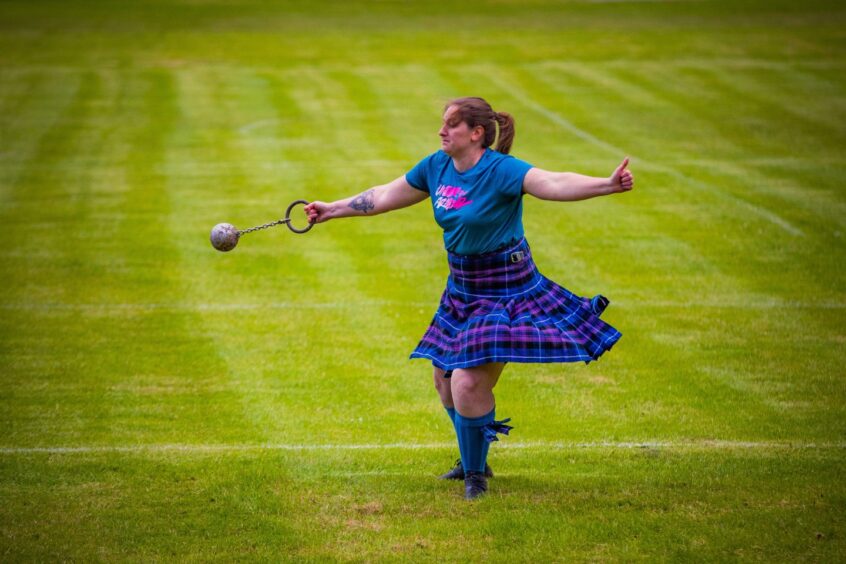
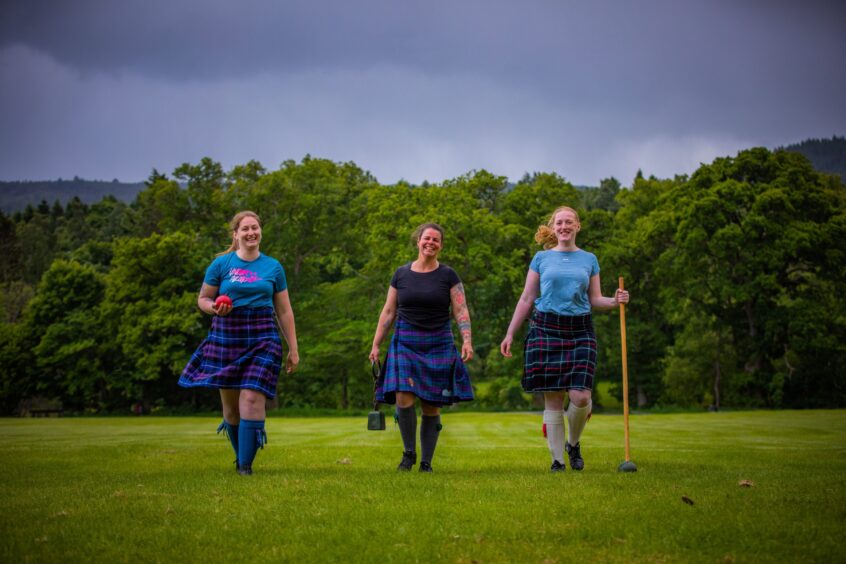
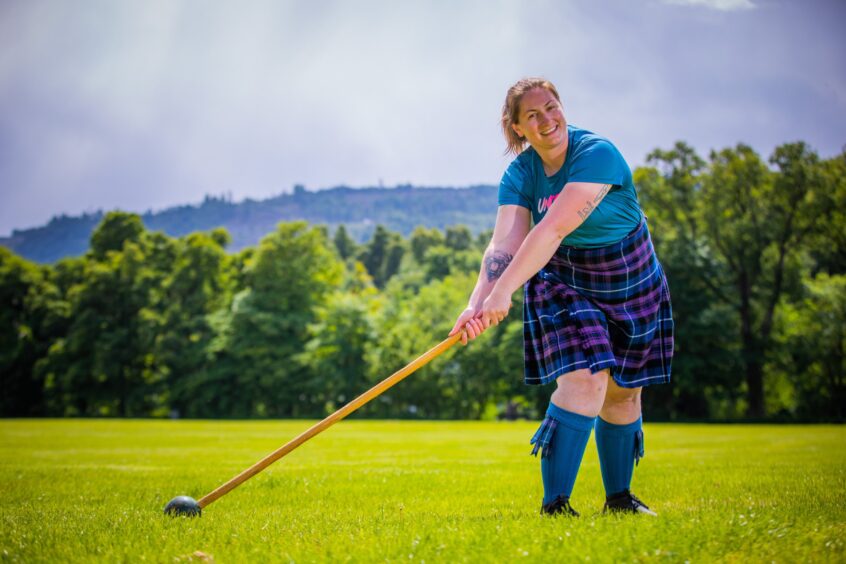
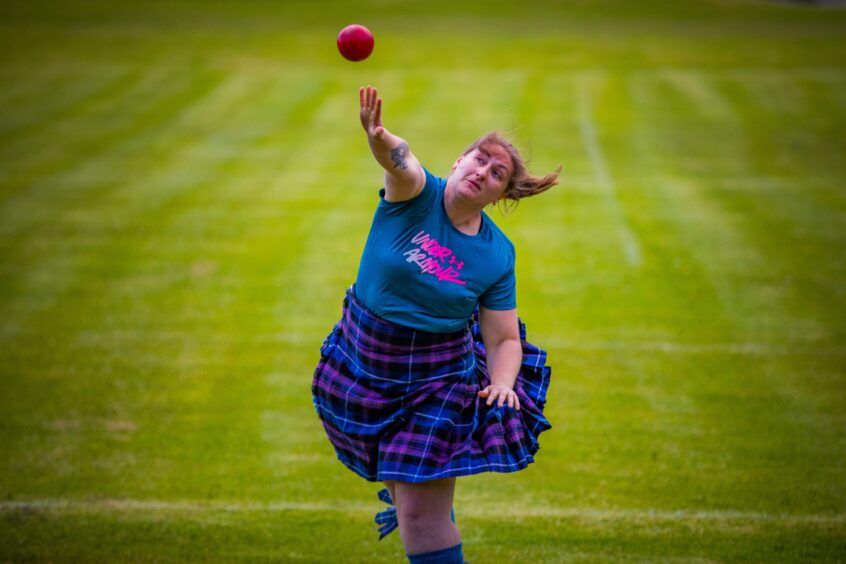
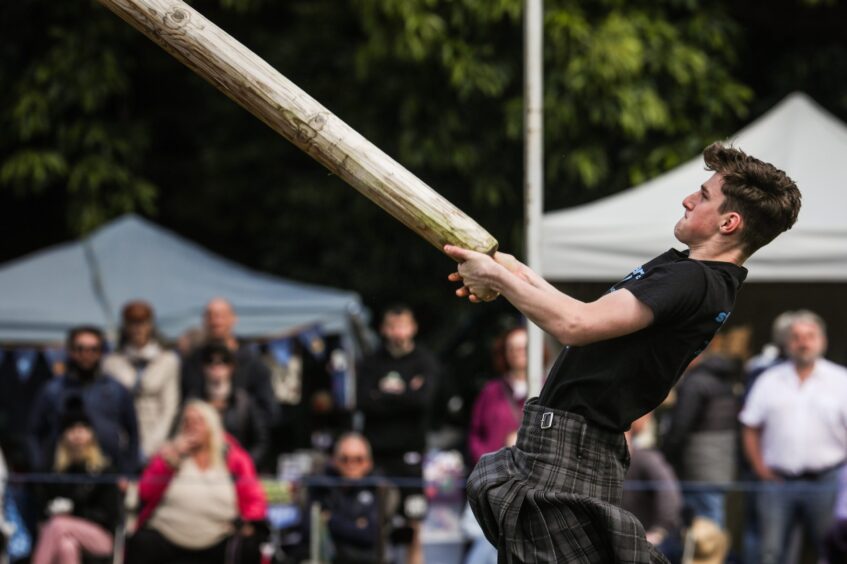
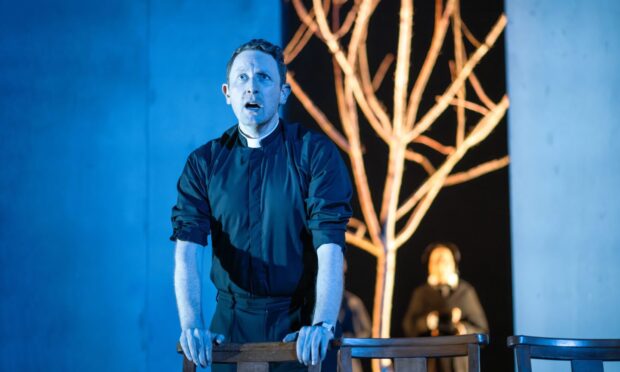


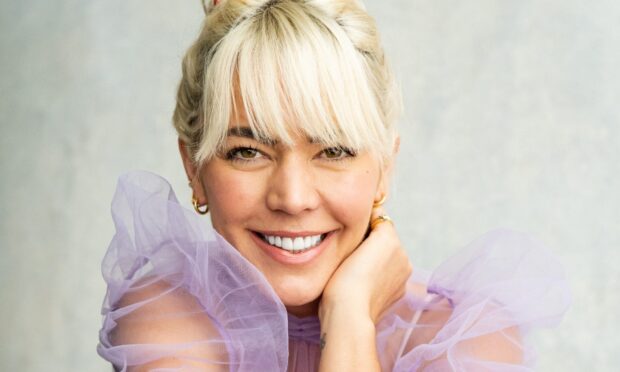
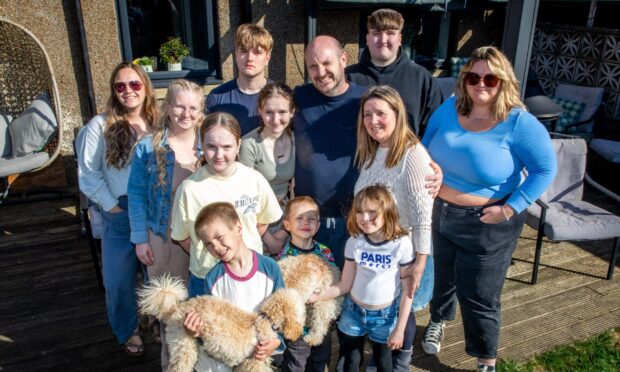
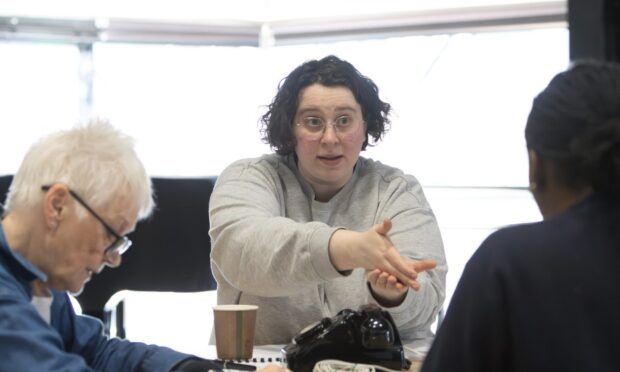
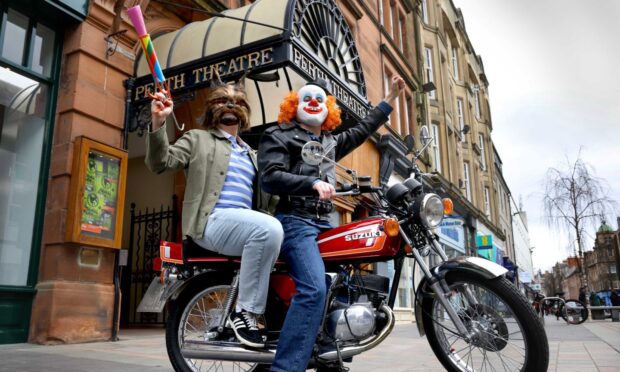
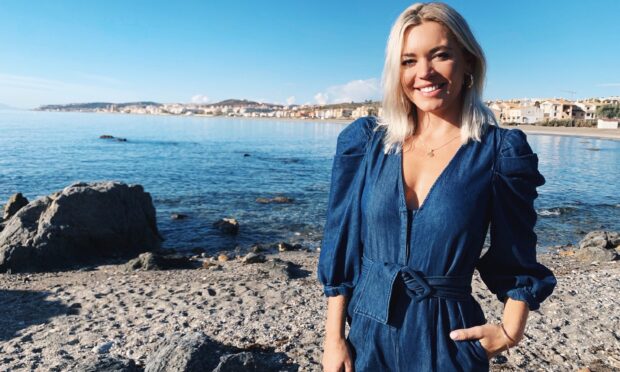
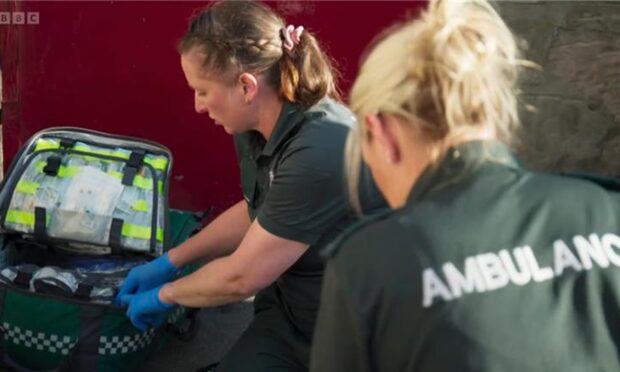
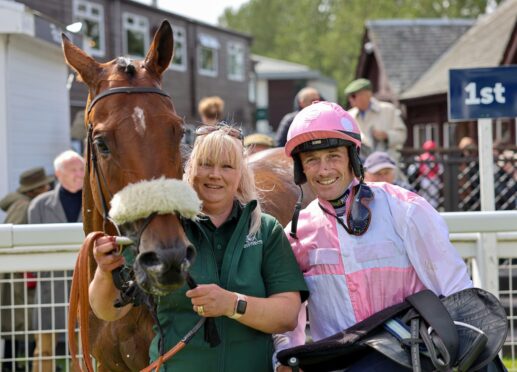
Conversation